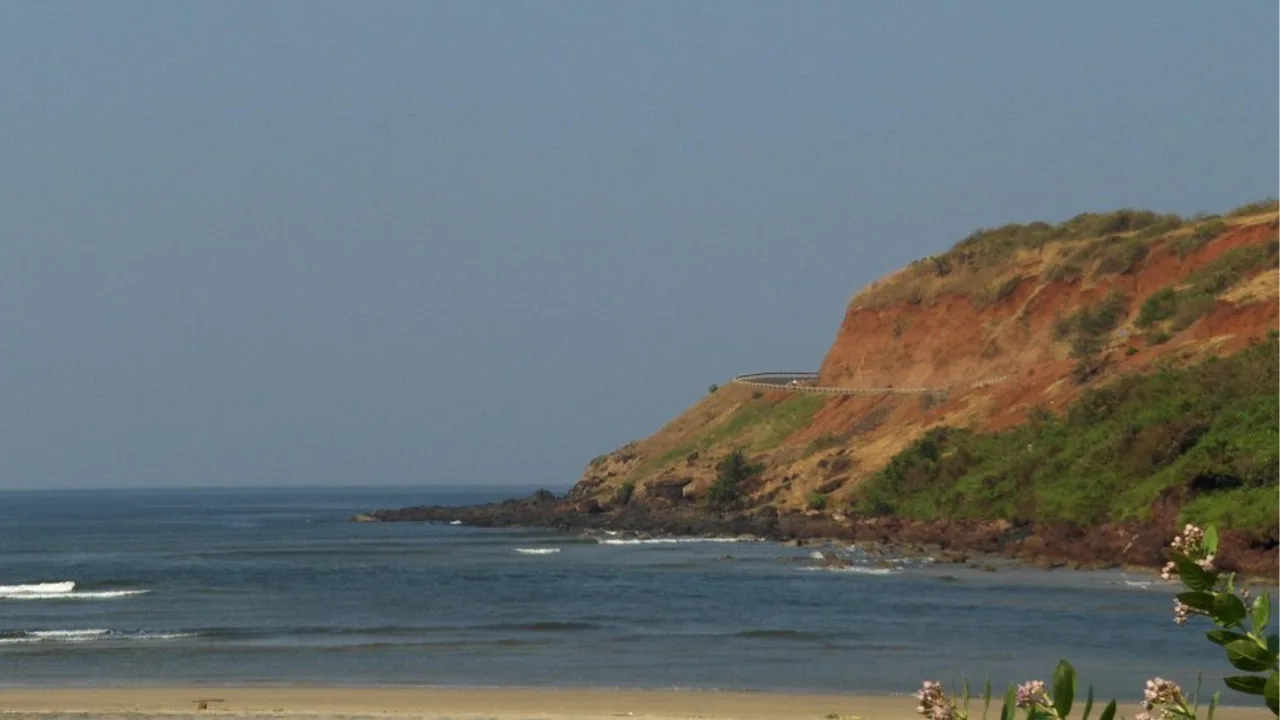Introduction: Is Ganpatipule Beach Really Dangerous?
Ganpatipule Beach is one of Maharashtra’s most beautiful and serene coastal destinations. But beneath its scenic charm lies a less-talked-about truth — this beach can be risky for visitors, especially swimmers. Within the first few feet from the shore, there are sudden drop-offs, hidden currents, and limited safety measures. Over the years, multiple unfortunate incidents have raised serious concerns among locals and tourists alike.
So, why Ganpatipule Beach is dangerous? Let’s dive into every aspect — from real-life incidents, weather patterns, oceanic currents, to tourist safety tips — so you can plan your trip safely and wisely.

The Natural Geography of Ganpatipule Beach
Ganpatipule lies along the Konkan coast in Ratnagiri district. This stretch of coastline is not like your usual shallow beaches. Here, the sea floor drops suddenly, turning shallow waters into deep zones in just a few steps.
These hidden drop-offs are one of the major causes of swimming-related mishaps. Visitors expecting calm waters often find themselves caught off guard by the swift change in depth. This creates confusion and panic, which increases the chances of drowning.
Rip Currents: The Silent Threat You Can’t See
One of the most dangerous features at Ganpatipule is the presence of rip currents. These are narrow channels of water that move quickly away from the shore. Most people don’t even notice them until it’s too late.
Swimmers caught in rip currents often struggle to return to the beach. The instinct is to swim against the current, but that only exhausts the swimmer faster. Understanding these currents is key to beach safety, especially in areas where they’re known to form, like here.
Real Incidents and Drowning Cases at Ganpatipule
There have been several Ganpatipule beach accidents over the years. In a tragic 2012 incident, seven people drowned in a single day. Not all the bodies were recovered immediately. More recently, families have suffered losses due to overconfidence in water or lack of awareness about sea behavior.
These are not isolated cases. Similar accidents have happened in nearby beaches too, suggesting that this region poses consistent risks for unprepared tourists.
Monsoon Hazards: Why You Should Avoid Visiting in Rainy Season
The monsoon season (June to September) makes the beach even more unpredictable. The sea becomes rough, with high waves, reduced visibility, and stronger rip tides. The sand also shifts more rapidly during this time, increasing the danger of underwater drop-offs.
During monsoon months, local authorities often discourage swimming altogether. That said, many tourists are unaware of these warnings, especially those coming from inland areas with no beach experience.
Is It Safe to Swim at Ganpatipule Beach?
The honest answer: No, it’s not considered safe for swimming. While some areas may appear calm, the presence of strong undercurrents and sudden depth changes makes swimming a gamble, especially for inexperienced visitors or children.
There is no swimming ban at Ganpatipule Beach, but caution is heavily advised. Local authorities sometimes put up temporary warning signs, but they aren’t always enforced or maintained.
Lifeguards and Emergency Help: What’s the Reality?
Unlike some popular tourist beaches in Goa or Kerala, lifeguard services at Ganpatipule are limited. While a few trained personnel are stationed during peak tourist season, the beach is often unmanned, especially in less crowded months.
In case of an emergency, medical and rescue help may take time to arrive due to the remote nature of the location. This delay can make the difference between life and death.
Common Myths About Ganpatipule Beach Safety
Let’s clear up some common misunderstandings:
Myth: The beach looks calm, so it must be safe.
Fact: Calm-looking waters can still have strong undercurrents beneath.
Myth: Locals swim here, so it’s safe for tourists too.
Fact: Locals are often more experienced and know the safe zones, unlike tourists.
Myth: If the water is shallow at the start, it stays that way.
Fact: Sudden underwater slopes can change the depth drastically just a few feet in.
Beach Safety Tips for Ganpatipule Visitors
If you’re planning a visit, follow these safety practices:
-
Avoid swimming altogether, especially during monsoon.
-
Check local warnings or talk to locals before going near water.
-
Never swim alone, and always stay close to the shore.
-
Watch your kids closely — don’t let them enter water unattended.
-
Wear light clothes that won’t weigh you down if wet.
-
Respect nature — if the sea looks rough, don’t risk it.
-
Know the signs of rip currents: a channel of choppy water, foam, or color change can indicate danger.
Why Not to Swim at Ganpatipule Beach?
Still wondering why not to swim at Ganpatipule? Here’s a recap:
-
Strong, invisible rip currents.
-
Lack of lifeguards or warning systems.
-
Frequent accidents, especially in monsoon.
-
Poor emergency access.
-
Hidden drop-offs and deep trenches.
It’s simply not worth the risk. Enjoy the beach from the shore, take pictures, and relax — without putting your life in danger.
Dangerous Beaches in Maharashtra: A Wider View
Ganpatipule isn’t the only risky beach. Other coastal areas in Maharashtra like Arey Ware, Velas, and parts of Alibaug also have similar issues. These include poor signage, aggressive tides, and limited tourist awareness. If you’re exploring the Konkan region, make it a point to ask locals before venturing into the sea anywhere.
Conclusion: Respect the Beauty, Stay Safe
Ganpatipule Beach is undeniably beautiful. Its crystal waters, soft sands, and spiritual aura attract thousands of tourists. But safety should always come first. Don’t let the calm surface fool you — understand the risks, take precautions, and enjoy the destination responsibly.
Your safety is in your hands.
FAQs About Ganpatipule Beach Safety
Is Ganpatipule Beach safe for families?
It’s safe for sightseeing, but not recommended for swimming or letting children near water unsupervised.
Can I swim at Ganpatipule Beach?
It’s strongly advised not to swim, especially if you are not experienced in ocean swimming.
Are there lifeguards at the beach?
Lifeguards may be present in peak seasons, but coverage is inconsistent.
When is the best time to visit?
Avoid monsoon season (June to September). The best time is October to February.
Why is Ganpatipule Beach dangerous?
Strong rip currents, sudden depth drops, and lack of lifeguards make it risky.
What should I do if I see someone drowning?
Call local authorities immediately. If trained, throw a floatation device but don’t risk swimming in yourself.
Are there other dangerous beaches in Maharashtra?
Yes, some other beaches with similar risks include Arey Ware and Velas.
What’s the biggest safety tip for Ganpatipule?
Stay out of the water and always be alert. Enjoy the view, not the waves.








